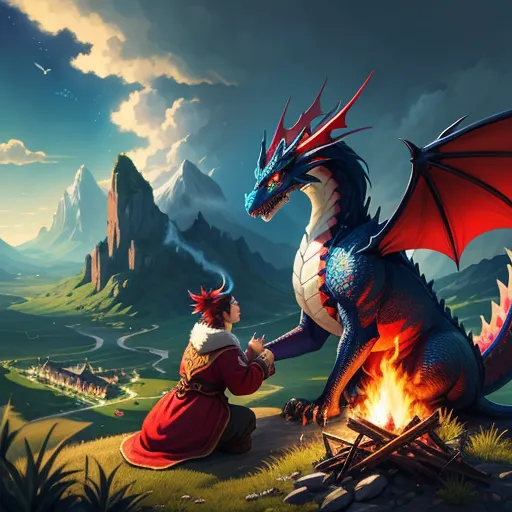Table of Contents
Drawing:5z_boyjkm98= Dragon has fascinated artists and enthusiasts for centuries. Dragons are mythical creatures that symbolize power, wisdom, and mystery, making them a popular subject in various forms of art. Drawing dragons offers artists the freedom to explore imaginative and fantastical elements, leading to a wide range of creative interpretations. In this article, we will delve into the world of dragon drawing, exploring techniques, inspirations, and the cultural significance behind these majestic creatures.
Drawing:5z_boyjkm98= Dragon The Allure of Dragon Drawings
Dragons hold a unique place in mythology and popular culture. Drawing:5z_boyjkm98= Dragon Whether you are influenced by European dragons breathing fire or the serpentine dragons of Asian legends, the creature’s mystical qualities offer endless opportunities for artistic exploration. Drawing dragons allows artists to express their creativity by playing with the form, texture, and design of these legendary beasts. Drawing:5z_boyjkm98= Dragon
Historical Significance of Dragons in Art
Dragons have been depicted in art for millennia, across different cultures. Drawing:5z_boyjkm98= Dragon In Europe, dragons were often seen as fierce creatures, associated with destruction and heroism. Meanwhile, in Asian cultures, particularly in China and Japan, dragons were revered as symbols of good fortune, power, and wisdom. This cultural diversity provides artists with a wide array of influences when drawing dragons, giving them the freedom to choose a style that reflects their interpretation of the mythical creature. Drawing:5z_boyjkm98= Dragon
Dragon Drawing Styles: Western vs. Eastern
When drawing dragons, artists often choose between Western and Eastern styles. Western dragons are typically depicted with large wings, four legs, and a fearsome appearance, while Eastern dragons are more snake-like, with elongated bodies, and are often seen as protectors. Understanding the differences between these two styles can help an artist decide which type of dragon they want to draw.
Tools and Materials for Drawing Dragons
Creating a detailed dragon drawing requires the right tools and materials. Many artists prefer using pencils for sketching, as they allow for intricate detailing and shading. Some opt for ink or markers to create bold outlines, while others may use colored pencils or watercolors to add vibrancy to their dragon drawings. Digital drawing tools, such as tablets and graphic design software, are also increasingly popular for creating highly detailed and polished dragon illustrations.
Drawing Dragon Anatomy
Understanding the anatomy of a dragon is essential for creating a realistic or stylized dragon drawing. Since dragons are mythical creatures, artists have the creative freedom to design them in various ways. However, many dragon drawings include common elements such as wings, tails, horns, and scales. By studying animal anatomy, such as reptiles and birds, artists can create more believable dragon designs. Drawing:5z_boyjkm98= Dragon
How to Start a Dragon Drawing
When starting a dragon drawing, it is helpful to begin with basic shapes to outline the body structure. Circles and ovals can represent the head, body, and limbs, while triangles can be used for the wings and tail. Once the basic structure is in place, artists can begin adding details such as claws, scales, and facial features. Drawing:5z_boyjkm98= Dragon Drawing:5z_boyjkm98= Dragon
Drawing Dragon Wings
One of the most iconic features of a dragon is its wings. Drawing dragon wings requires careful attention to detail, as they are often large and intricate. Artists can take inspiration from bat or bird wings, incorporating elements such as membranes, bones, and folds. Shading the wings can add depth and realism, making them appear more three-dimensional.
Dragon Scales and Textures
Dragon scales are another important element to consider when drawing dragons. Whether you are drawing small, tightly packed scales or larger, more pronounced scales, the texture plays a significant role in bringing the dragon to life. Artists can use shading and cross-hatching techniques to create the illusion of depth and texture in the scales. Drawing:5z_boyjkm98= Dragon
Creating Dragon Expressions
Dragons can have a wide range of expressions, from fierce and intimidating to calm and wise. The facial expression of a dragon can convey its personality and the mood of the drawing. By experimenting with the shape of the eyes, mouth, and horns, artists can create a dragon that fits the desired narrative, whether it’s a terrifying creature or a benevolent guardian. Drawing:5z_boyjkm98= Dragon
Incorporating Fire and Other Elements
Many dragon drawings feature additional elements such as fire, smoke, or water. Fire-breathing dragons are particularly popular, and artists can use shading and gradients to create realistic flames. Including environmental elements in the drawing, such as mountains, forests, or castles, can also enhance the overall composition and add context to the dragon’s story.
Exploring Color in Dragon Drawings
Color plays a crucial role in dragon drawings, as it can influence the mood and theme of the artwork. Red and orange tones may represent a fiery, aggressive dragon, while blue and green hues could symbolize a more peaceful, water-based dragon. Artists can experiment with different color palettes to bring their dragons to life and add depth to their designs. Drawing:5z_boyjkm98= Dragon Drawing:5z_boyjkm98= Dragon
Shading Techniques for Depth
Shading is an essential part of drawing dragons, as it adds depth and dimension to the creature’s form. Artists can use techniques such as cross-hatching, stippling, or blending to create shadows and highlights. Proper shading can make a dragon appear more realistic or give it a more stylized look, depending on the artist’s vision. Drawing:5z_boyjkm98= Dragon
Drawing Dragons in Action
Dynamic poses can make dragon drawings more exciting and engaging. Artists can depict dragons in flight, breathing fire, or battling knights to create action-packed scenes. By studying movement and action in other creatures, such as birds or lizards, artists can create more fluid and natural poses for their dragons. Drawing:5z_boyjkm98= Dragon
Adding Backgrounds to Dragon Drawings
A well-thought-out background can enhance a dragon drawing by placing the creature in an exciting environment. Whether it’s a mountain range, a fiery volcano, or a serene lake, the background can add depth and narrative to the dragon drawing. Including clouds, trees, or castles in the distance can give the drawing a more epic and fantasy-inspired feel.
The Importance of Detail in Dragon Drawings
Paying attention to small details can make a dragon drawing stand out. From intricate scales to the veins in the wings, these small elements can add realism and depth to the artwork. Artists who focus on detailing are often able to create dragons that feel alive, full of character and personality.
Inspiration from Mythology
Mythology is a rich source of inspiration for dragon drawings. Ancient stories from cultures around the world feature dragons as symbols of power, danger, or wisdom. Artists can draw inspiration from these legends to create dragons that embody the traits found in mythical lore, such as the fire-breathing dragon from European tales or the water-dwelling Lung dragon from Chinese mythology.
Famous Dragon Art in Pop Culture
Dragons have become iconic figures in modern pop culture, appearing in films, books, and video games. Characters like Smaug from “The Hobbit” or Drogon from “Game of Thrones” have popularized dragon imagery and influenced how modern artists approach dragon drawing. By studying these famous depictions, artists can find inspiration and develop their own unique take on dragon art.
Digital Tools for Dragon Drawing
In today’s digital age, many artists use graphic tablets and software to create dragon drawings. Programs like Adobe Photoshop, Corel Painter, and Procreate allow artists to experiment with different brushes, colors, and textures. Digital drawing also offers the advantage of easily making adjustments and creating multiple versions of a dragon drawing without starting over.
Challenges in Drawing Dragons
Drawing dragons can be challenging, especially when it comes to proportions, anatomy, and texture. Artists often struggle with maintaining the balance between realism and fantasy, ensuring that the dragon feels believable while still appearing mythical. However, with practice and experimentation, artists can overcome these challenges and develop their own style.
How to Develop Your Own Dragon Drawing Style
Every artist has a unique style, and this extends to drawing dragons. By experimenting with different techniques, materials, and inspirations, artists can develop a personal style that sets their dragon drawings apart. Whether it’s a preference for detailed realism or a more abstract, cartoonish look, finding a signature style takes time and practice.
Conclusion: Embracing the Art of Dragon Drawing
Dragon drawing is a creative and rewarding endeavor that allows artists to explore their imagination and artistic skills. Whether you are a beginner or an experienced artist, drawing dragons offers endless possibilities for expression. With the right tools, techniques, and inspirations, anyone can create stunning dragon drawings that capture the essence of these legendary creatures. From fire-breathing beasts to wise, serpentine guardians, the world of dragon art is as vast and exciting as the dragons themselves. Embrace the challenge, experiment with different styles, and let your creativity soar as you embark on your dragon drawing journey.







